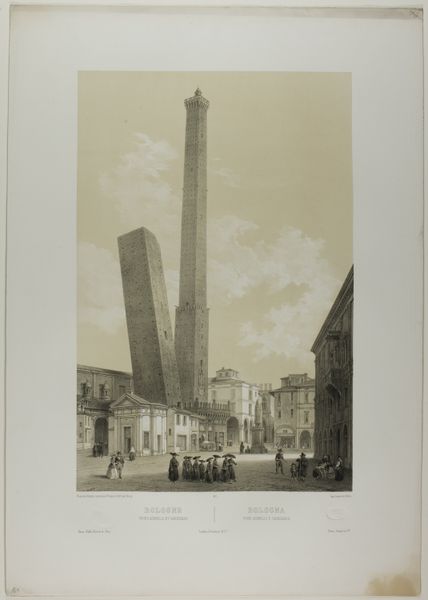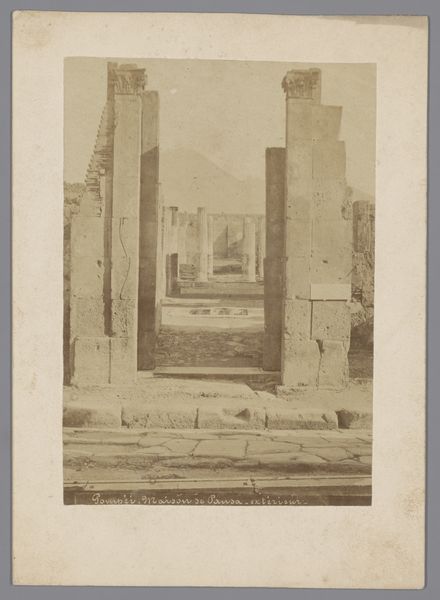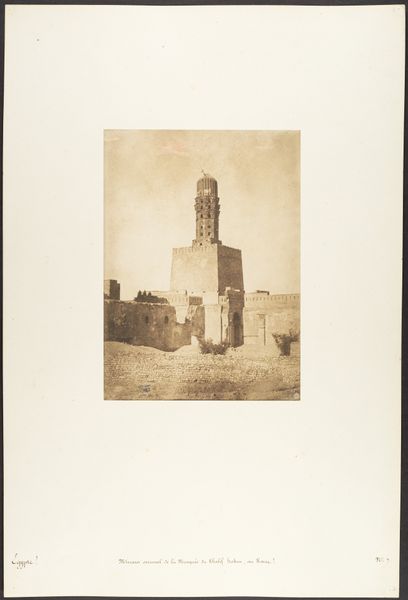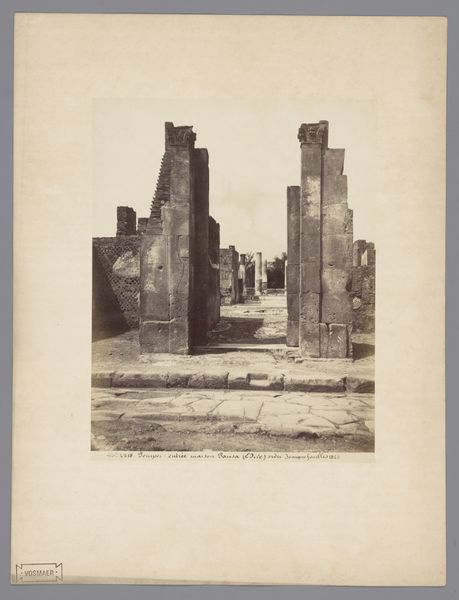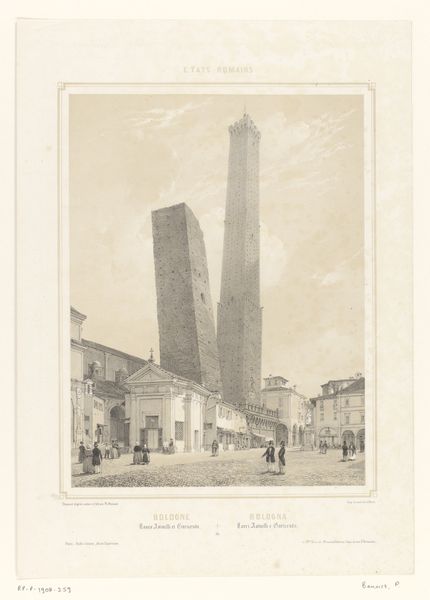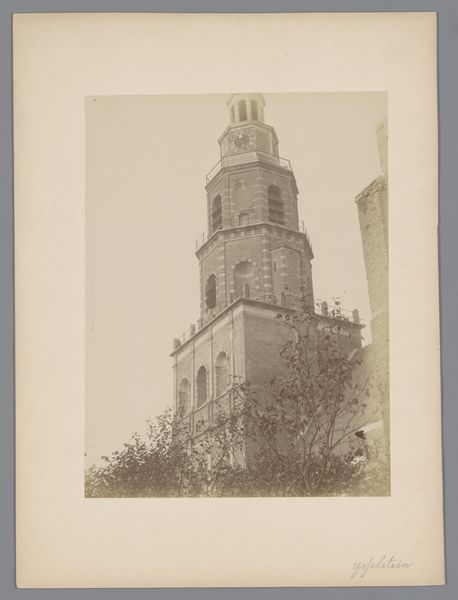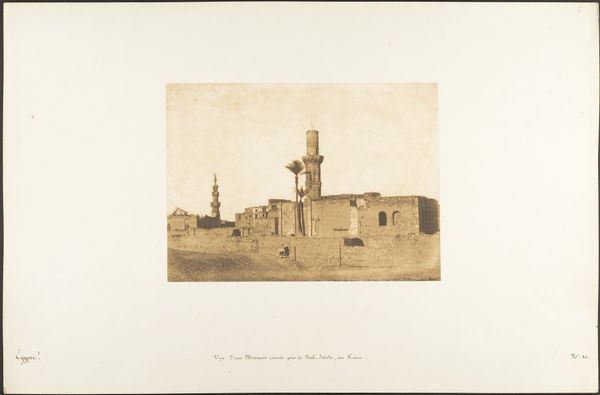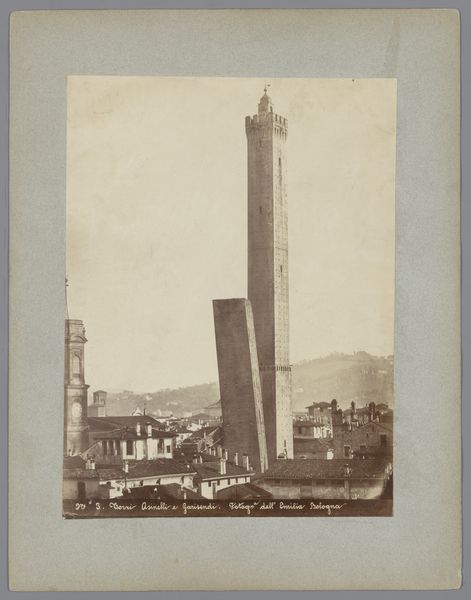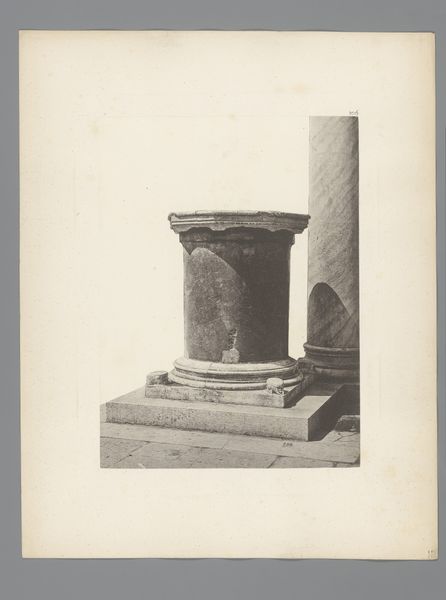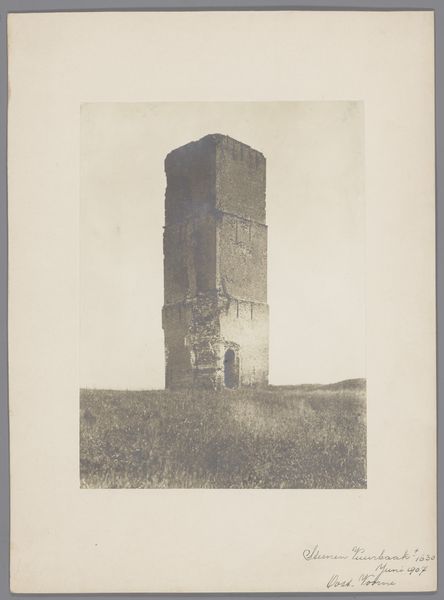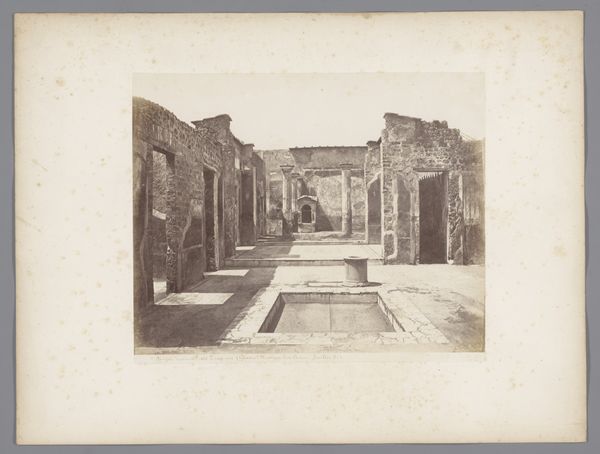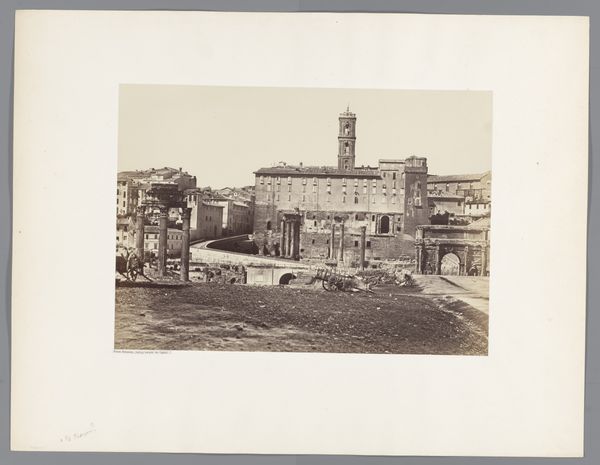
Gezicht op de torens van Asinelli en Garisenda te Bologna, Italië 1865 - 1907
0:00
0:00
print, photography
# print
#
landscape
#
photography
#
cityscape
#
realism
Dimensions: height 445 mm, width 317 mm
Copyright: Rijks Museum: Open Domain
Curator: Here we have a photographic print, “View of the Asinelli and Garisenda Towers in Bologna, Italy.” The collective behind this image is known as Fotografia dell’Emilia and it likely dates somewhere between 1865 and 1907. Editor: It strikes me immediately as somewhat unsettling. That leaning tower on the left appears as though it's about to topple. It creates a disquieting tension within an otherwise calm cityscape. Curator: It is intriguing. Bologna was a popular destination for wealthy travelers in the 19th century, eager to see its medieval towers. And photography like this one served as documentation for those experiences, fitting into the era's fascination with realism. Think of the popular Grand Tour at this time! Editor: It also makes you wonder about the photographer's intentions. Why choose this angle that emphasizes the precariousness? Was it simply documentary, or were they trying to capture a particular feeling about the city? The towers weren't necessarily considered dangerous back then. And what was the labor like? How long would exposures have been? Were the people even aware that they were part of this? Curator: That’s an interesting question to explore when discussing the photographic medium at that time. Of course, we can't know the exact intention but the circulation of such imagery helped create, or reinforce, the city’s image as an historic place worth seeing and experiencing, playing a role in shaping Bologna's cultural identity. The rise of tourism would naturally put this work in context. Editor: Yes, but let’s not forget the practicalities! How does the specific material—the photographic print itself—affect our perception? The sepia tones, the texture of the paper…it all contributes to this sense of a distant, almost dreamlike past, while relying on recent innovations. The convergence of science, technology, tourism and the "real". Curator: Absolutely, and perhaps we're also projecting our modern understanding of "leaning towers" and structural instability onto it. Maybe people viewed the Garisenda tower with less anxiety at the time. Editor: Still, the choice of subject, the composition… It all leads me to suspect a deliberate effort to evoke a certain mood. Curator: In any case, it’s a beautiful and evocative piece. Editor: Indeed. One that bridges history, artistry, and the enduring allure of material culture.
Comments
No comments
Be the first to comment and join the conversation on the ultimate creative platform.
